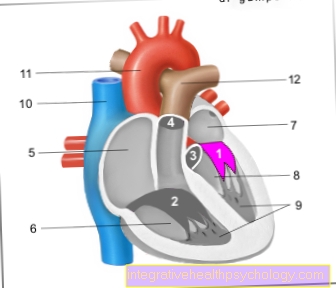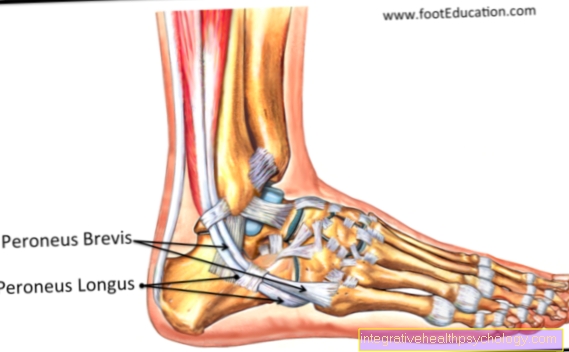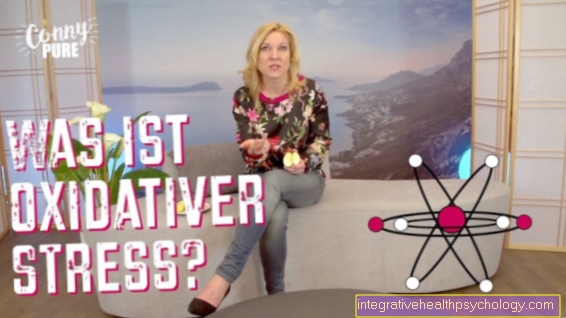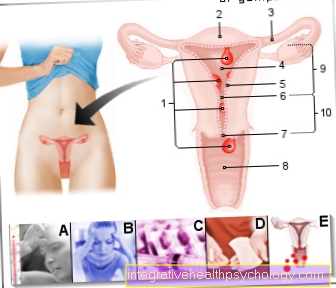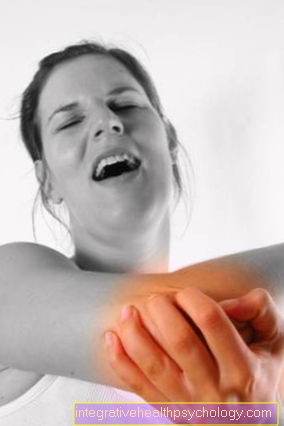meditation
definition
Meditation describes a process in which the mind is supposed to calm down and concentrate through the use of certain techniques, including breathing and posture. This spiritual practice, practiced in many cultures and religions, should lead to a state of consciousness in which concentration, deep relaxation, inner balance and mindfulness can be achieved.
Key terms that try to describe the desired state in more detail are: "stillness", "emptiness", "being one of body and mind", "being in the here and now" and "being free of thoughts".
The term "meditation" is derived from the Latin "meditatio”, Which means something like“ thinking, reflecting ”.
Read more on the subject at: Relaxation

Medical indications for meditation
Derived from meditation practice there is the so-called "mindfulness-based stress reduction"(Mindfulness-Based Stress Reduction, MBSR). This is a program that, for example, under various behavioral and psychodynamic Psychotherapy methods is used. It includes exercises for mindful body awareness, yoga postures, sitting and walking meditation.
MBSR training is said to have positive effects in the treatment of numerous different clinical pictures: For example, it can have a healing effect on chronic pain, fears or panic attacks, sleep disorders, depression, headaches and migraines, skin diseases, stomach problems and burnout syndrome. It should also help the sick to reduce stress, anxiety and depression and thus enable them to cope better with the disease.
What happens during meditation?
Many different meditation techniques can be distinguished. They can be roughly divided into two groups: The passive and the active Meditation. In passive meditation, you meditate in quiet sitting, in active meditation, on the other hand, movements and speaking also play a role.
The meditation forms known in the west are Vipassana and Zazen. The basic exercise here is to concentrate fully on mental, emotional, and physical phenomena in the present. The focus is therefore on a mindful approach to body and mind.
In the Samatha meditation the daily flow of thoughts should be interrupted by concentrating on a single object. This object can be one's own breath, but also an image in front of the inner eye (called a chakra) or a Mantra, i.e. a syllable that is constantly repeated in the mind (e.g. "Om"). With the help of this technique a deep calming of the mind is to be achieved.
One form of active meditation is yoga. Yoga includes various movement and posture exercises, breathing techniques, fasting and other forms of asceticism.
Meditative aspects also play a major role in various forms of martial arts, dance and music.
Physiological changes during meditation are shown by a slower heartbeat, lower blood pressure, deeper breathing, muscle relaxation, and a decrease in sweat gland activity. The deep relaxation can even be achieved in the so-called. electroencephalogram (EEG) through slower, more synchronized brain activity.
People who meditate regularly should have a greater density of nerve cells in the orbitofrontal cortex and in areas of the cerebral cortex that are important for cognitive and emotional processes and well-being. There is also a higher cell density in the hippocampus and the insular cortex, which are important for body sensation, self-perception, but also compassion. For this, however, the density of gray matter in the amygdala should be lower, an important region for processing stress and anxiety.
The question of whether meditation slows the aging of the brain is the subject of current research.
Research on meditation shows that you can compassion can train through meditation. For example, it has been shown that in the brains of Buddhist monks the reactions to stimuli that induce compassion (such as the sound of someone crying) were stronger than in other people.
How and where can you learn meditation?
There are several ways to learn meditation.
Beginners can take an MBSR course (see above). This Courses (often also called "coping with stress through mindfulness") are now offered in many larger cities. They offer an introduction to meditation and gentle yoga exercises. The courses usually run over a period of eight weeks with one meeting per week, and you also receive a CD with instructions for independent daily practice.
Numerous Centers also offer courses in many other forms of meditation.
Of course, there are also many other sources that offer instructions for independent meditation at home.
costs
The cost of an eight-week MBSR course is around € 350.
For other meditation courses, the costs vary greatly and should be inquired about individually.






